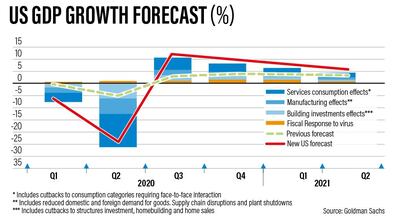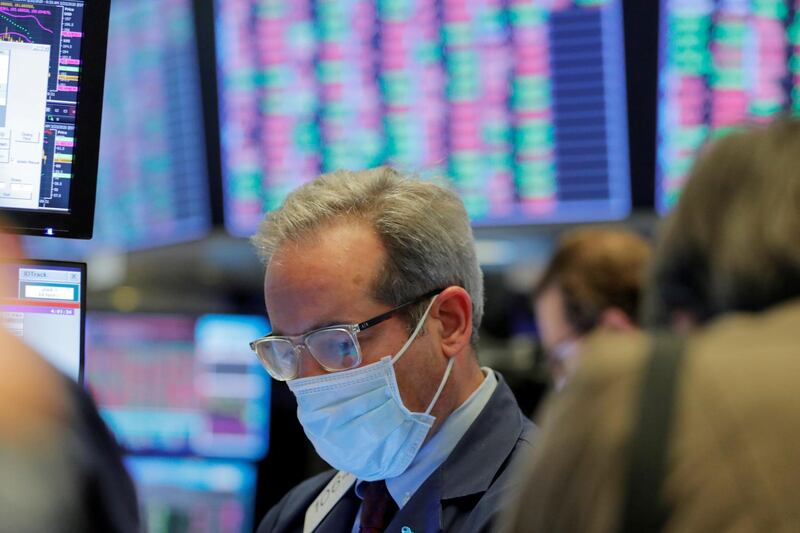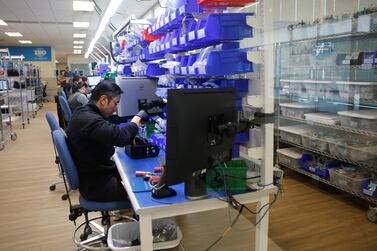The US economy is expected to fall sharply in the second quarter followed by a gradual recovery, but overall growth for 2020 is set to contract as the world’s biggest economy struggles to contain the economic fall out from the coronavirus pandemic, according to investment bank Goldman Sachs.
In a new research note, the bank forecast a 6 per cent contraction in gross domestic product for the first quarter of the year, followed by a 24 per cent decline during the second quarter as social distancing measures aimed at stopping the virus spread take their toll. A recovery is expected in the second half, with GDP growth of 12 per cent in the third quarter and 10 per cent acceleration in the fourth quarter, meaning full-year growth will still decline by 3.8 per cent on an annual average basis.
"The sudden stop in US economic activity in response to the virus is unprecedented, and the early data points over the last week strengthen our confidence that a dramatic slowdown is indeed already under way," a team of analysts from the bank said in the research note titled A Sudden Stop for the US Economy.
“In some US states, authorities have now issued state-wide shutdown orders to slow the pace of virus spread and avoid overwhelming the health care system, measures that will further reduce the level of economic activity.”
So far in the US, there have been more than 470 deaths due to the coronavirus and infections exceed 35,000 cases, according to the Johns Hopkins University, which is tracking the pandemic.
The Goldman report forecast an 85 per cent slowdown in spending on sports and entertainment, a 75 per cent drop on transport and a 65 per cent decline on hotels and restaurants spending. It also warned the manufacturing sector will decline more than initially expected – slumping as much as 20 per cent next month as the major car plants temporarily close. Construction sites face complete closure in some areas, with a 25 per cent drop in both homebuilding and new business structures expected in April.
“In total, we expect declines in services consumption, manufacturing activity, and building investment to lower the level of GDP in April by nearly 10 per cent. We assume that this drag then fades gradually by 10 per cent each month,” it said.

The analysts forecast the unemployment rate will more than double over the next couple of quarters to 9 per cent, from the current 3.5 per cent. But the overall impact on unemployment will depend on what form the third (and largest) stimulus package, which is in the works by Congress, will take.
A more substantial expansion of unemployment insurance benefits is likely to push rates higher, but targeted loans to SMEs to fund payroll from March to June – so long as companies continue to pay 75 per cent of salaries – would reduce the impact.
The US high-yield bonds market is also pricing in a short recessionary shock with a recovery in the second half of the year, according to Markus Allenspach, head of fixed income research at Swiss bank Julius Baer.
“If US policymakers can agree on a credible package to lift the US economy out of recession in the second half of the year, the market has a good chance of stabilisation,” he said, indicating that it expected the overall impact of the crisis to be a “moderate” contraction.
“We are confident that the US Congress and US President will deliver a sizeable stimulus package. But as with all fiscal packages being discussed around the globe, there is a material time lag between the discussion of a fiscal measure, the implementation of it and the time it takes to generate results,” Mr Allenspach said.
Bond markets were pricing in an unemployment rate of just above 6 per cent currently, he said.








